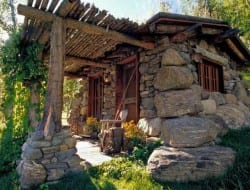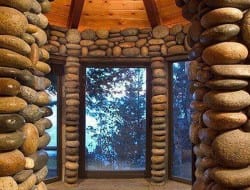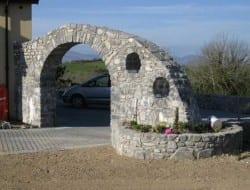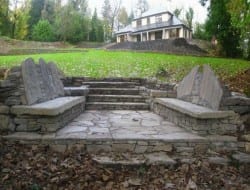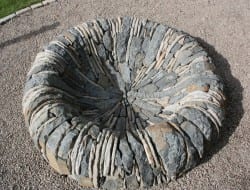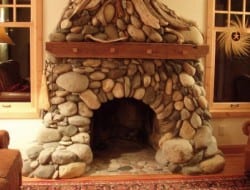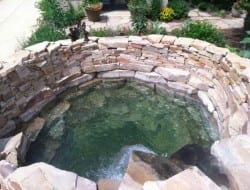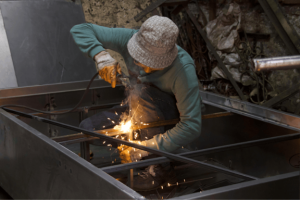Last Updated on March 26, 2025 by teamobn
The concept of dry stone walls has been around since agriculture began. No mortar, just gravity. Dry stone walls don’t interfere with the natural drainage of the site.
The beauty of a stone wall is softened by moss and lichen. The stones look worn and weathered, but they still stand firm. The texture of the stones is a testament to the strength of the structure.
Stone walls are a type of masonry that has been used for centuries to create strong and durable barriers. Today, they are often used as decorative features in gardens and landscapes.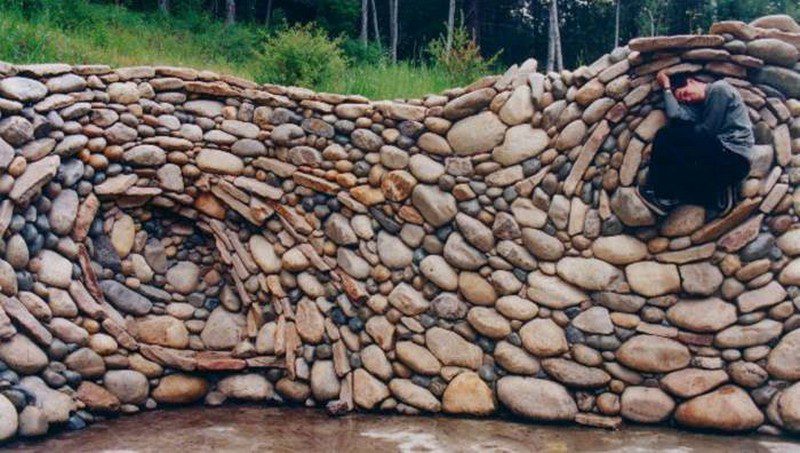
They’re also low cost and low maintenance. You can travel the world and bump into dry stone (also called a dry stack) anywhere surface rocks are found. They’re as popular today as they ever were. All you need is a source of stones and some enthusiasm.
Studding Dry Stone Wall Constructions
The natural beauty of stone can be used to create harmony between the man-made elements of a landscape design and the natural surroundings. Alternatively, stone can be used to create a focal point or feature, such as a cairn.
Stone walls are not only a beautiful and unique addition to any home, but they can also be functional. While most people think of stone walls as being used for outdoor projects, they can actually be used indoors as well.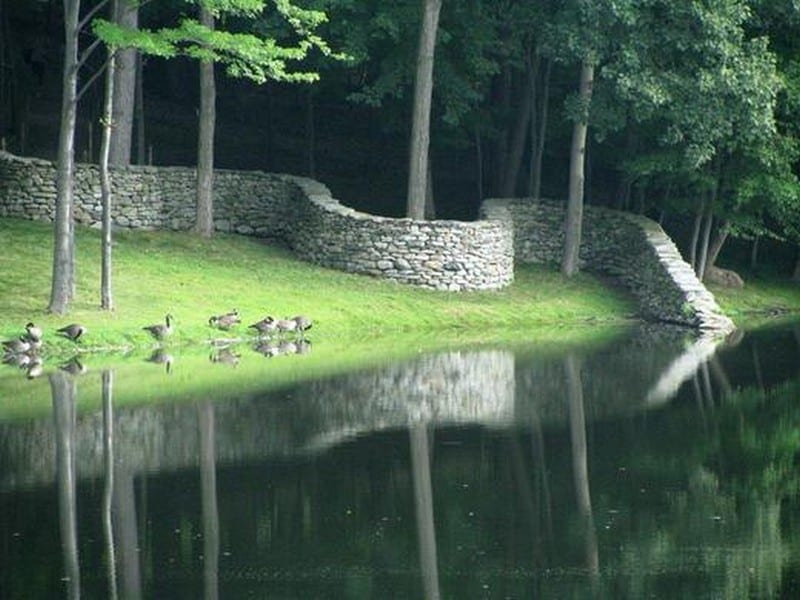
They can be used to create indoor privacy screens, and partition rooms, or even create a unique and stylish headboard. If you’re looking for a stone wall project that’s a little more challenging, you can use them to build a fireplace surround or an accent wall.
Whether you use them for indoor or outdoor projects, they’re sure to add a touch of beauty and charm to your home.
You can also use them as a low retaining wall for your flower bed, as outdoor seating, as a fire pit, as a garden centrepiece or as a water feature. The possibilities are limited only by imagination.
Moon gate
The moon gate is designed with a round or arched opening and is flanked by two walls made of stone. Moon gates are often used as a focal point in gardens and can be decorated with carvings or other features.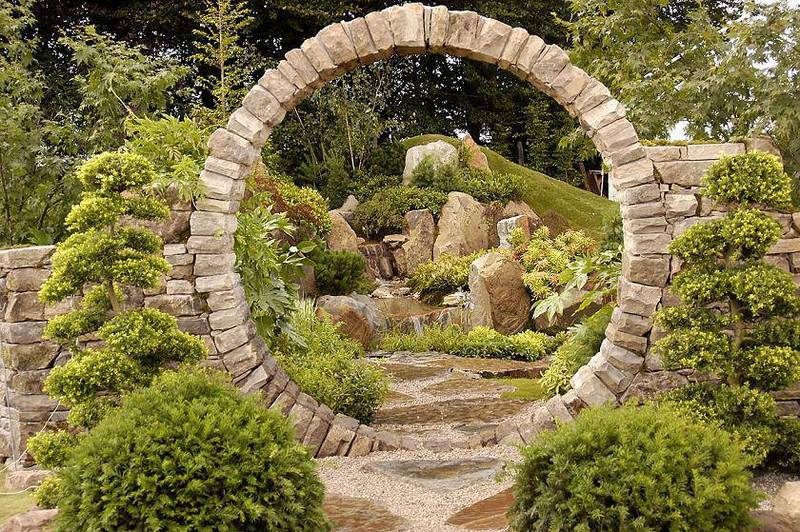
Stone Car
If you have an old car that you no longer have a use for, you can turn it into an interesting and unique piece of lawn décor by transforming it into a stone car.
This can be done by simply covering the exterior of the car with dry stone. With a little bit of creativity, you can turn an old eyesore into a beautiful and one-of-a-kind work of art.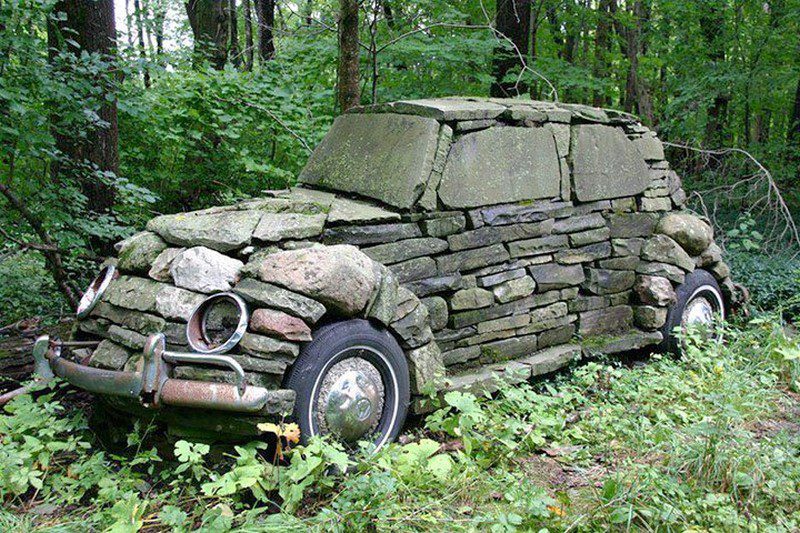
Outdoor Seats
Outdoor stone seats are a great way to add a touch of class to your garden or patio. They are also very durable and easy to care for, making them a great choice for busy families or those who entertain often.
Stone seats are available in a variety of styles, so you can find the perfect one to match your décor. They can be placed in the sun or in the shade, making them a versatile option for any space.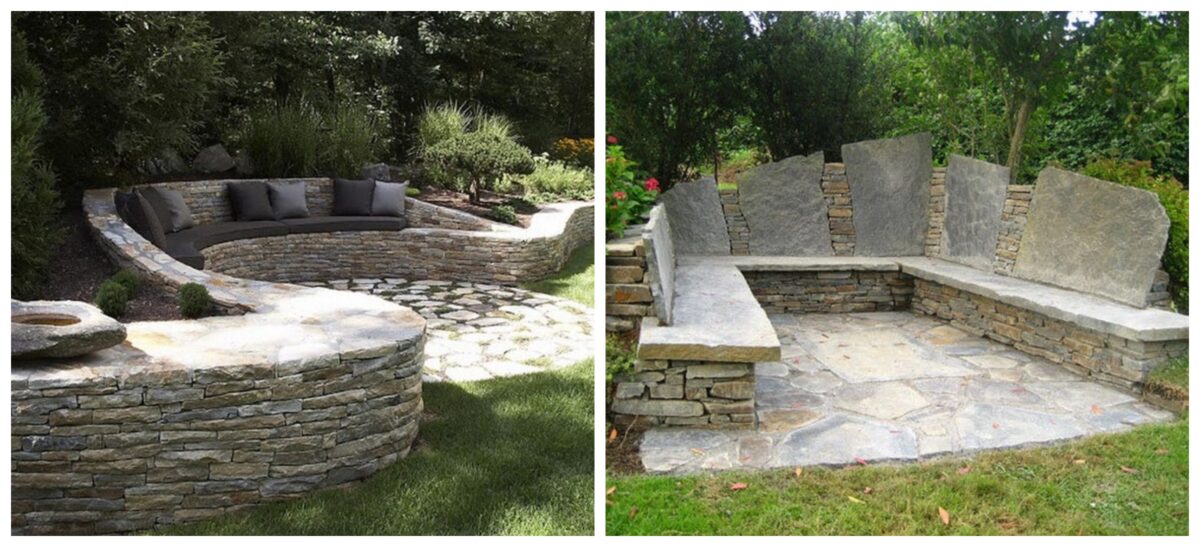
If you want to add a natural touch to your home with a stone wall, but you’re not sure where to start, check out our stone wall gallery. You’ll be able to find a style that fits your home and get started on your own stone wall project.
Dry Stone Wall Techniques and Tools for Beginners
A dry stone wall might look rustic and simple, but the skill behind its construction is anything but basic. Unlike brick or cement walls, dry stone walls rely entirely on the strategic placement of stones and the force of gravity. This method has been used for centuries, not just for its visual appeal but for its strength and resilience. For beginners, understanding the basic techniques and tools is the first step toward building a wall that will last for generations.
Understanding the Structure
Every dry stone wall starts with a solid foundation. The base should be dug slightly below ground level and filled with larger, flatter stones. These foundation stones provide weight and stability. From there, stones are stacked with care, creating a structure that tapers slightly inward as it rises. This inward angle is known as the batter, and it adds crucial strength against pressure and gravity.
A dry stone wall isn’t just two stacks of rocks. It typically features two outer faces with a gap in between, which is filled with smaller stones called hearting. These fill stones help lock the wall together and prevent movement. Throughstones—longer stones placed periodically across the wall—tie both sides together, adding more stability.
Choosing the Right Stones
Not all rocks are equal when it comes to building a dry stone wall. The best stones are those with flat faces and angular shapes. Rounded stones may look appealing, but they’re much harder to stack securely. Limestone, sandstone, and granite are all popular options, depending on what’s available in your area.
If you’re sourcing your own stones, aim for a mix of sizes. Larger stones are great for the base and the outer faces, while smaller ones fill the core. Reclaimed stone can also work well and gives your wall a beautifully weathered look from the start.
Essential Tools to Get Started
You don’t need a truckload of tools to build a dry stone wall, but a few basics will make the job smoother. A walling hammer or stone hammer is used to chip away irregular edges. For tougher stone, a chisel and a hand sledge can help shape each piece to fit snugly.
A string line and stakes help keep your wall straight and true, especially over long distances. A line level or spirit level ensures consistency in height. Don’t skip gloves and safety glasses—stone chips can be sharp, and you’ll want to protect your hands and eyes as you work.
A wheelbarrow or sturdy cart can also be a big help when moving heavy stones around the site. If your project is on a slope, consider a simple ramp system or slide boards to reduce lifting strain.
Building with Patience and Precision
Creating a dry stone wall isn’t a race. Take your time to find the right stone for each spot. Listen for the satisfying “click” when a stone fits perfectly. Every layer you add builds both beauty and strength. Over time, moss and lichen may begin to soften the wall’s look, making it feel like part of the landscape.
Learning dry stone wall techniques is a hands-on experience. Each wall tells a story of craftsmanship and natural design. With the right tools, a bit of practice, and a pile of stone, even a beginner can create something timeless.
History and Cultural Significance of Dry Stone Walls Around the World
The dry stone wall has roots that go deep into human history. Long before mortar and concrete were developed, ancient people figured out how to build walls by simply stacking stones. No cement. No binding agents. Just gravity and skill. These structures have stood the test of time, offering both function and beauty across continents and cultures.
In the British Isles, dry stone walls are a defining feature of the countryside. In regions like Yorkshire, Cumbria, and the Scottish Highlands, walls made of local fieldstone divide pastures and mark property lines. Many of these walls have stood for hundreds of years, some even dating back to the Bronze Age. Farmers built them to clear fields of rocks and create natural enclosures for livestock. Over time, they became part of the landscape’s identity, shaping rural life and holding cultural meaning tied to land ownership and tradition.
Ireland is also known for its dry stone walls, especially in areas like the Aran Islands. There, walls are built with porous limestone that allows sea winds to pass through rather than knock them over. These walls have a patchwork look, stacked high and close together, creating a strong sense of place and history. They were essential for survival—dividing land, protecting crops, and helping families establish a claim in harsh conditions.
Outside Europe, dry stone walling appears in many parts of the world. In Peru, the Inca Empire used a refined version of the technique to build cities like Machu Picchu. Their approach didn’t just involve stacking stones; the Incas shaped and polished each block to fit perfectly with the others. These walls didn’t just look good—they were built to withstand earthquakes. The structures flex with movement, a quality modern engineers still admire.
Dry stone terraces are common in the Mediterranean in countries like Greece, Italy, and Croatia. These walls have carved hillsides into flat farming spaces, helping prevent erosion and manage scarce water resources. Many of these walls are still in use today, supporting olive groves and vineyards in landscapes shaped by human hands over centuries.
Dry stone walling also has a spiritual side. In Japan, the technique appears in castle walls and traditional gardens. The style, known as “ishigaki,” emphasizes balance, texture, and harmony with nature. These walls weren’t just defensive—they were designed to inspire calm and reflection.
What ties all these places together is the understanding that dry stone walls do more than just mark a boundary. They represent a relationship between people, land, and stone. They tell stories about migration, survival, craftsmanship, and culture. Each region adds its own style and meaning, but the core idea remains the same—using what nature provides to build something strong, lasting, and meaningful.
Today, the dry stone wall connects modern builders with ancient techniques. Whether seen in a quiet pasture or a highland trail, it stands as a reminder of human resilience and creativity.
Dry Stone Wall Project Gallery
Click on any image to start the lightbox display. Use your Esc key to close the lightbox. You can also view the images as a slideshow if you prefer 😎
Environmental Benefits of Dry Stone Wall Construction
Dry stone wall construction is more than just a timeless building method. It’s also an eco-friendly choice that supports sustainable design and landscape preservation. Because it uses natural materials and avoids chemicals or mortar, a dry stone wall works in harmony with the environment rather than against it. For anyone looking to build a lasting structure with a low environmental impact, this traditional technique offers real advantages.
Promotes Natural Drainage
One of the most important environmental benefits of a dry stone wall is how it handles water. Unlike concrete or mortared walls, a dry stone wall allows rainwater to flow through its gaps and settle into the ground. This helps reduce surface runoff, erosion, and water pooling. On sloped sites, dry stone retaining walls slow down the movement of water, preventing soil loss and protecting nearby vegetation.
When integrated into garden design or hillside terraces, these walls help manage stormwater without the need for complex drainage systems. That makes them especially useful in areas prone to heavy rain or shifting soils.
Supports Biodiversity
A well-built dry stone wall creates pockets of space between the stones. These tiny cavities provide shelter and breeding grounds for a wide range of species, including insects, amphibians, small mammals, and even reptiles. Bees and butterflies use the crevices as resting spots. Birds may nest in protected areas near or within the wall. Over time, moss, lichen, and small plants begin to grow, adding to the micro-ecosystem.
This kind of habitat value is rare in modern landscaping. A dry stone wall blends into the natural surroundings, offering wildlife a place to live without disrupting the overall design of the site.
Reduces Carbon Footprint
Dry stone construction has a minimal carbon footprint compared to concrete or brickwork. There’s no manufacturing process that releases carbon dioxide. There’s no need for cement, adhesives, or synthetic reinforcements. Most stones used in this kind of wall are sourced locally, which eliminates the environmental impact of long-distance transport.
Because these walls are so durable, they don’t require constant maintenance or early replacement. Some dry stone walls have lasted hundreds of years with little intervention. That kind of longevity reduces the need for new materials and lowers the overall environmental cost over time.
Uses Reclaimed and Natural Materials
Dry stone walling often makes use of reclaimed materials. Old buildings, demolished walls, or leftover stones from excavation projects can all be reused without processing. This repurposing keeps waste out of landfills and gives the stones a second life in a new form. When stones are gathered from the local area, it also helps the wall blend naturally into the landscape, maintaining visual harmony with the surrounding terrain.
Encourages Low-Impact Construction
Dry stone walls are built by hand. That reduces the need for heavy machinery, loud tools, and site disturbance. The ground is usually left in a more natural state, and trees, roots, or plantings nearby can often be left undisturbed. For people trying to build sustainably or protect native ecosystems, this low-impact construction method is a smart and respectful choice.
A dry stone wall is more than a practical barrier or decorative feature. It’s a sustainable structure that works with nature, not against it. By building one, you’re not just adding to your landscape—you’re also helping preserve it.
Conclusion
Dry stone wall projects combine beauty, function, and craftsmanship in a way that few building methods can match. They blend seamlessly into natural landscapes while offering lasting strength and environmental benefits. Whether used for retaining walls, garden features, or artistic designs, each project reflects patience and skill. Building a dry stone wall isn’t just construction—it’s a connection to tradition and the land itself.
If you liked these, you will also like viewing Cast in Stone…



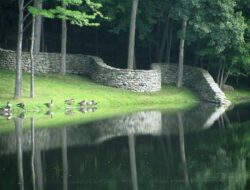
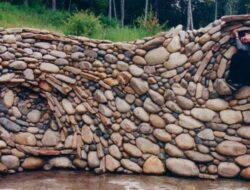


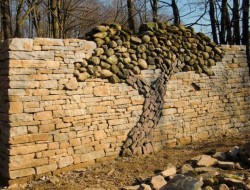
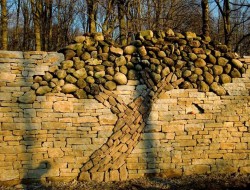


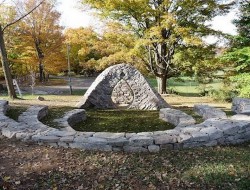
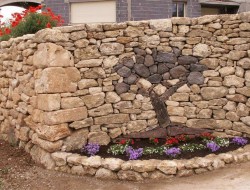


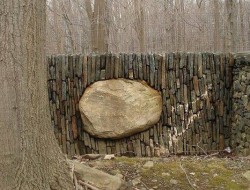
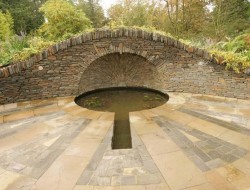
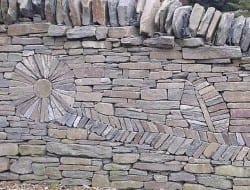

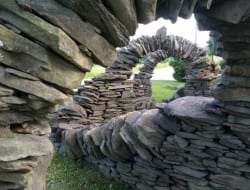
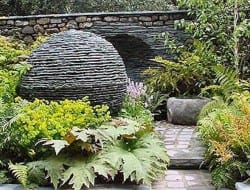
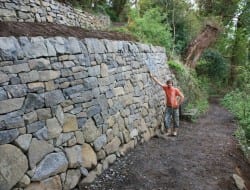
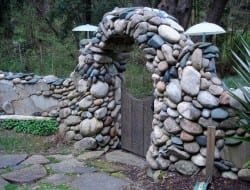
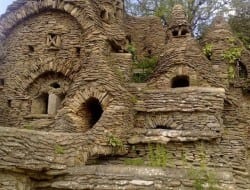
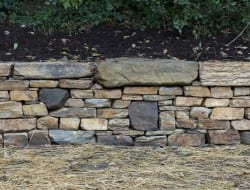
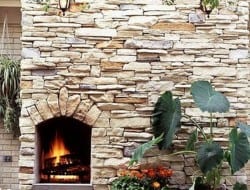
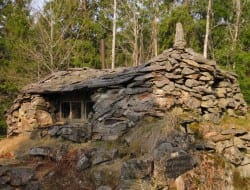
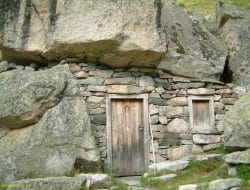
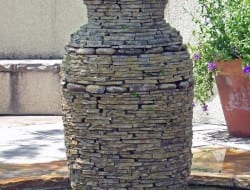
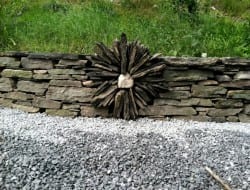
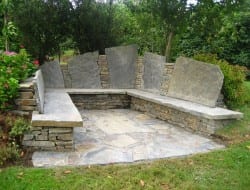
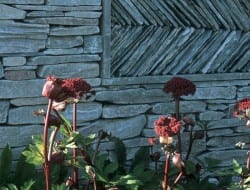
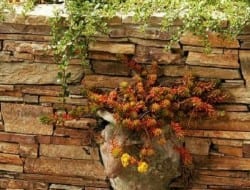

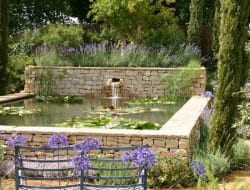
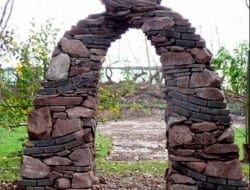
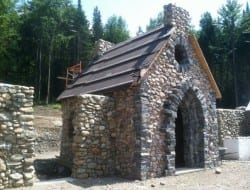
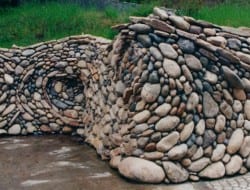
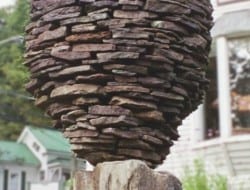
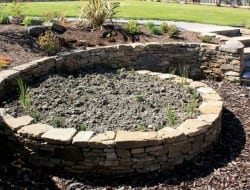
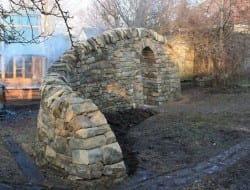
![So often when we post outdoor ideas, we see lots of comments relating to spiders and other creepy-crawlies [ See - we do read your comments :-) ] This dry stone wall just gets straight to the point - there will be creepy-crawlies. The wooden inserts are](https://theownerbuildernetwork.co/wp-content/uploads/2013/04/Dry-Stone-Walls-14-250x190.jpg)
